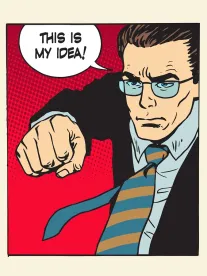Last week Docket Navigator delivered a troubling headline regarding a recent District Court decision – “Invalidity Opinion Delivered After Product Launch No Defense to Willful Infringement.” As a practitioner who regularly drafts non-infringement and invalidity opinions, this sort of headline tends to catch your attention; especially after the Supreme Court appeared to breath new life into opinion practice with the Halo decision (Halo Elecs., Inc. v. Pulse Elecs., Inc., 136 S.Ct. 1923 (2016)). The Halo decision rejected the Seagate two-part test that had controlled enhanced damages since the Federal Circuit handed down the en banc decision in 2007 (In re Seagate Tech., LLC, 497 F.3d 1360, 1371 (Fed. Cir. 2007)(en banc)). So, are the courts already trying to break the Halo?
The short answer is No, the decision that spawned the headline (Omega patents, LLC, v. Calamp Corp., 6:13-cv-1950-Orl-40DCI FLMD) is a bit more complicated than the simple headline might suggest. The decision to grant enhanced damages arose from an interesting set of unfavorable facts for the defendant. According to the opinion, the Plaintiff had brought the patents to the defendant’s attention years prior to the infringing product being brought to market. The defendant allegedly received an oral opinion of non-infringement and invalidity prior to bringing products to market, but no definitive evidence of that opinion was produced (and some contradictory evidence regarding the non-infringement position came out during trial). These and a few other unfavorable facts, led the judge to decide that the opinions drafted after the infringing products were put on the market (actually only after the litigation started), were not sufficient to avoid enhanced damages.
In the end, this case appears to be a situation where the defendant knowingly and willfully infringed (at least based on the facts presented in the decision). Additionally, the facts presented in the decision suggest that there was some amount of deception or at least questionable actions related to the alleged opinion positions and actions related to infringement of the patents at issue.
A good cautionary tale for clients that don’t think formal opinions are worthwhile after becoming aware of potentially troublesome patents. Halo is definitely not broken, and a formal written opinion in a timely manner may have resulted in a very different outcome in this case.



 />i
/>i


